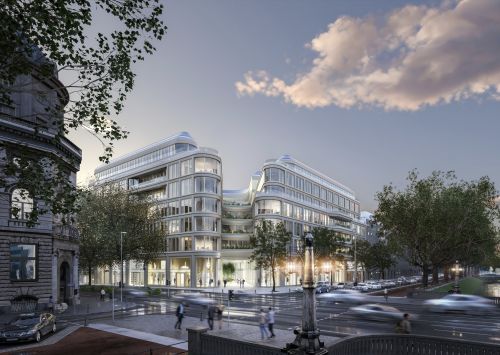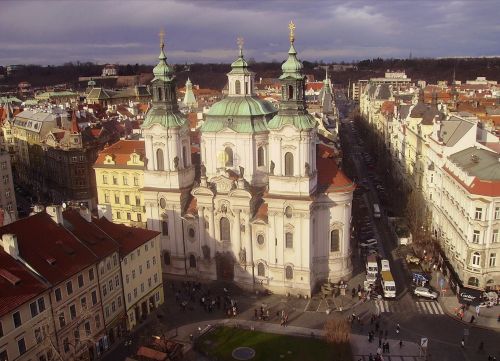The game of the name
Residential
The naming of Polish estates has certainly evolved over the last twenty or so years, in much the same way as the Polish language, civil life and the property development sector itself have done. However, the main concept has remained little changed. “A good name is characterised by the fact that it is easy to remember and repeat; furthermore, it should evoke specific associations, on themes that are close to our hearts,” explains Dom Development’s spokesperson Radosław Bieliński. “If residents identify themselves with the name of the estate and use it in everyday life, this gives us additional proof that the name is a good one,” he adds.
Premium and not premium
Terms such as ‘villa’, ‘residence’ and ‘luxury apartments’, which were extremely popular among residents at the beginning of the 21st century, are now being used less and less often. These were used to suggest the prestigious character of a project – even though their standard and quality of the construction could vary. Since then the trend has been to move away from foreign words suggesting prestige in the more affordable segment; however, they are still used by developers for other projects. “For example, Linde Residence, a project in Warsaw’s Bielany district, owes its name to the proximity of the Linde Forest, while the second part of its name indicates that it is a premium segment project, which makes it easier for potential buyers to classify and make a preliminary assessment,” explains Krzysztof Foder, the sales and marketing director at Bouygues Immobilier Polska, in confirmation of the above thesis. “Our clients are buyers in the popular segment, who appreciate references to the local area and Polish expressions that are easy to remember and bring to mind positive associations, as well as indicating that the living conditions are comfortable,” adds Michał Sapota, the CEO of Murapol.
Polish and non-Polish
Foreign words that sound easy and have positive connotations are, meanwhile, still popular when it comes to the names of Polish estates. In particular they are eagerly employed by international companies. “We are a French developer, so we often use French words in our names; however, we always have to make sure they are simple,” reveals Krzysztof Foder of Bouygues Immobilier Polska. “The basic rule is that the name should be relatively easy to read and remember. It is certainly better to avoid words that sound completely foreign and are not understandable for most people. In our projects, this approach can be seen to work in such names for estates as La Melodie or La Première, but to pronounce Icône or Jardin Bemowo you need at least a school familiarity with French.” Another company that feels no need to hide it roots is Finnish developer YIT, which is building the Nordic Mokotów estate in Warsaw. This estate will feature references its origins not only through its name but also in how the homes of its future residents are designed. Dom Development takes a completely different and quite firm stance on this issue. “We mostly use Polish names that emphasise the best features of our projects,” reveals Radosław Bieliński. “We do not use any words that carry negative associations or that are difficult to pronounce.”
So where do developers generally find the inspiration for naming their projects, particularly if they already have dozens under their belts? The coolest and catchiest names have already been used. Developers’ responses to this question tend to be along the same lines. “It is important for us to make sure the name fits in with the location of the estate – the history of any site is often important for us and we like to interweave this with the message communicated by the name,” explains Joanna Chojecka, the sales director of Robyg. Belgian company Matexi has a different philosophy. “We have some basic, internal assumptions when it comes to project names – in the vast majority of cases we simply use the name of the street and possibly the number of the building for single-stage or individual buildings. This is the most natural and unpretentious way of doing this,” argues Mirosław Bednarek, the CEO of Matexi Poland. However, he does admit that they have made an exception to this rule, but one that was justified and well thought out: Słodowiec Park Matexi, which was the first significant residential investment in that suburb of northern Warsaw. The company was planning other projects nearby, so they set up a marketing machine aimed at promoting Słodowiec as a new, promising residential destination.
The history of a location can also be a source of inspiration. YIT is currently building a residential complex in Warsaw’s Białołęka district and its name, Aroma Park, refers to the history of the site, where the ‘Pollena-Aroma’ perfume factory stood just a few years back. Meanwhile, the inspiration for the naming of Dom Development’s Żoliborz Artystyczny estate was the local tradition for painting murals on buildings and naming streets after eminent Polish artists. Atal’s naming method could be described as a mixed approach. “Project names allude to the names of districts, streets or the characteristic geographic features of the area, such as lakes, rivers or the sea,” explains Mateusz Juroszek, the vice-president of Atal, who adds: “We have the Atal Francuska Park, Masarska 8 Apartamenty, Bajeczna Apartamenty and Dmowskiego 19 estates, which refer directly to the names of the streets they are built on. We have also developed Nowy Targówek, Atal Residence Zabłocie, Chojny Park and Atal Nowe Żerniki, which are named after their districts. Atal Malta, Atal Baltica Towers and Stara Odra Residence, meanwhile, are named after the major bodies of water in their areas.”
Joanna Chojecka of Robyg points out another aspect of the issue – matching the name of the estate with the client target group and the name’s conformity to the visual identification of the project. “Our Young City and Życzliwa Praga estates are enjoying particular interest from young people and families with young children, and so we have given them apt names and colourful logotypes,” explains Joanna Chojecka. “Meanwhile, the name Green Mokotów is written in gold, symbolising the prestige of the district, while the project itself is designed for more demanding owners looking for a second – usually bigger – apartment or one to buy as an investment.”
Turning to the experts or intuition?
Interestingly, even the larger players occasionally turn to the professionals, such as creative agencies or copywriters, to choose the names of their estates. Despite doing this, these developers still often trust the intuition and experience of their employees for the final decision. “We have been working with a creative agency that comes up with proposals for names for our projects, but we do not commission any professional focus surveys on how well these names are received,” relates Krzysztof Foder of Bouygues Immobilier Polska, who adds that: “The decision over the choice of name is usually made by those people directly involved in the project, that is, the project manager, the agency director and the sales and marketing director.” “Before we ultimately decide on the name of the estate, we carry out a survey within the company and of our potential clients, and sometimes we also involve external advisors,” explains Radosław Bieliński of Dom Development, “and in this way we can find out what associations a given name engenders and whether it is a unique name. We do not carry out any focus surveys.”
Think tank debunks drunk tank
Even though Polish developers can sometimes come up with achingly pretentious or clumsy names, the banal and the fear of transgressing business correctness still rule the roost when it comes to nomenclature – almost every other Polish estate is ‘Green’, ‘Cosy’, ‘Sunny’, ‘Family’ or ‘Flowery’. But out of the deluge of these clichés, however, you can sometimes unearth a gem, such as ‘Kolska od Nowa :)’ [which translates into something like: ‘Kolska Made Anew :)’]. This is being developed by Matexi Polska on ul. Kolska in Warsaw’s Wola district, but the main association Varsovians have with that street is of a particular institution some of them are unfortunately rather too familiar with: it is the location of the city’s drunk-tank. “The name encapsulates our project perfectly. It is the main pillar of the whole marketing strategy, enabling us to distance it from what the location has up until now been generally known for, the detoxification detention centre, along with all the jokes and anecdotes connected with it,” explains Mirosław Bednarek of Matexi Polska.
Warsaw-based Dantex, meanwhile, has recently announced the launch of an estate in Bemowo with a characteristic but rather controversial name: Muszlove. The originators of this neologism were inspired by its location on Muszlowa [Shell] street, where the project is being developed, and by combining the root of that with the English word ‘love’ – the feeling for it they wished to inspire in future residents. However, such cases of linguistic fancy that go beyond the usual accepted norms can be counted on the fingers of one hand on the residential market. Why? “Buyers do actually pay attention to the name of the project, because it feels nicer to live in an estate with an elegant name; but it is certainly not one of the main factors that determines their ultimate choice,” argues Krzysztof Foder. A good name is an addition to the other assets of a project and thus can increase the number of potential buyers. But the name of an estate alone is not enough for someone to change their minds about the home they buy.






















































